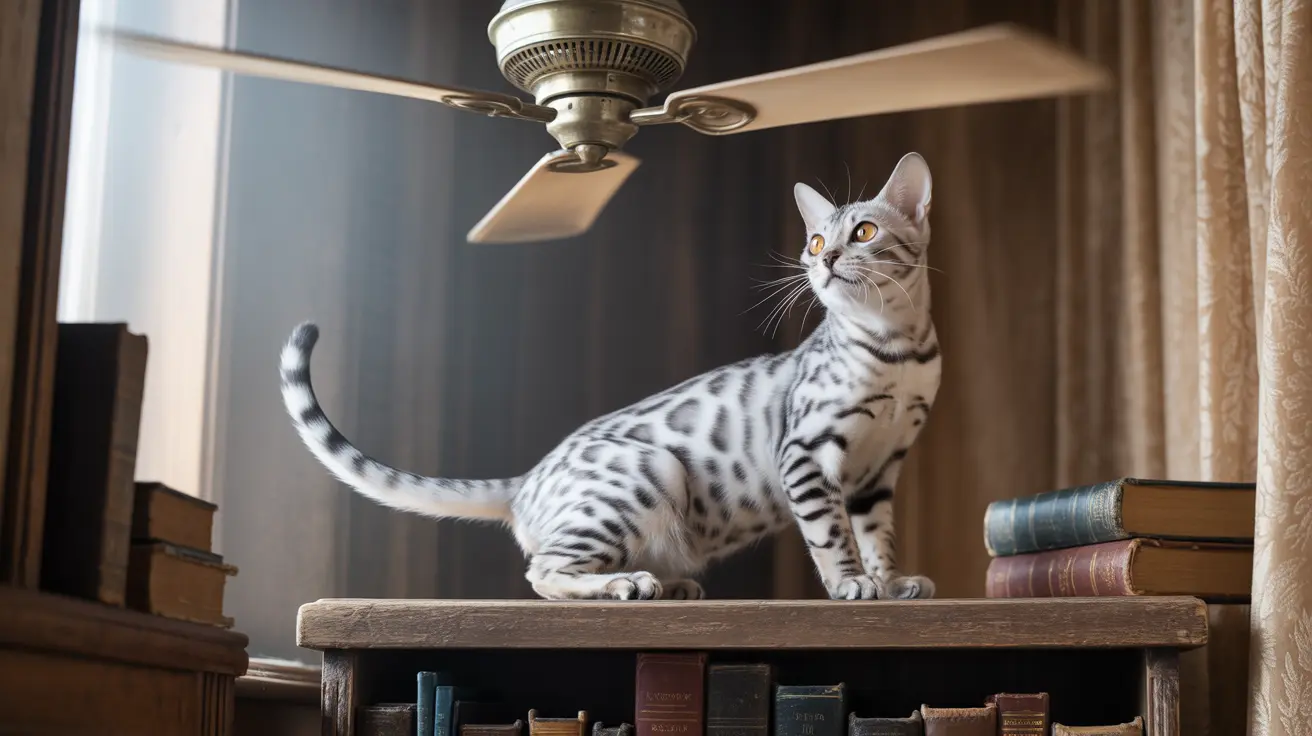Understanding Your Cat's Natural Instincts
Cats are naturally wary of large, moving objects above them – an instinct that served their ancestors well in the wild. When your cat sees a ceiling fan, especially in motion, it may trigger their innate predator-avoidance response. The rotating blades can resemble the movement of large birds of prey, activating your cat's survival instincts.
Additionally, cats have highly sensitive hearing that can detect subtle mechanical sounds that we humans might miss. The whirring, humming, or clicking of a ceiling fan might be particularly unsettling to your feline companion.
Signs Your Cat is Afraid of the Ceiling Fan
Recognizing fear behaviors is the first step in helping your cat. Common indicators include:
- Flattened ears and dilated pupils
- Crouching or low-body posture
- Excessive vigilance or staring at the ceiling
- Avoiding rooms with ceiling fans
- Hiding when fans are activated
- Nervous pacing or restlessness
The Impact of Past Experiences
Your cat's reaction to ceiling fans may be influenced by their early life experiences and socialization. Cats who weren't exposed to ceiling fans during their critical developmental period (2-7 weeks) might be more likely to develop fear responses later in life.
Creating a Safe Environment
To help your cat feel more secure, consider these environmental modifications:
- Provide elevated hiding spots and safe zones
- Create alternative pathways through rooms with fans
- Maintain fans properly to minimize unusual sounds
- Use slow fan speeds when introducing your cat to the room
- Ensure adequate vertical space away from the fan
Effective Training Techniques
Positive Association Training
One of the most successful methods for helping cats overcome their fear involves creating positive associations with the ceiling fan:
- Start with the fan turned off
- Offer high-value treats in rooms with ceiling fans
- Play favorite games near (but not directly under) the fan
- Gradually introduce fan movement at the lowest setting
- Reward calm behavior consistently
Gradual Desensitization
Systematic desensitization can help your cat build confidence around ceiling fans:
- Begin with short exposure periods
- Slowly increase the duration of fan operation
- Use progressive fan speeds over time
- Never force your cat to stay in the room
- Maintain a consistent routine
Frequently Asked Questions
Why are some cats scared of ceiling fans?
Cats may fear ceiling fans due to their natural instincts to avoid overhead threats, sensitivity to mechanical sounds, and unfamiliarity with moving objects above them. The rotating motion can trigger their prey animal instincts.
How can I help my cat overcome a fear of ceiling fans?
Use positive reinforcement training, gradual desensitization, and environmental modifications. Offer treats, create safe spaces, and never force interaction. Progress should be made at your cat's comfort level.
What are the common signs that indicate a cat is afraid of ceiling fans?
Look for dilated pupils, flattened ears, crouching, hiding, avoiding rooms with fans, excessive ceiling monitoring, and changes in normal behavior patterns when fans are present.
Can I use pheromone diffusers to reduce my cat's fear of ceiling fans?
Yes, pheromone diffusers can help create a calming environment. Products like Feliway can reduce overall anxiety and support your cat during the desensitization process.
How should I introduce a new ceiling fan to a cat who is already anxious around fans?
Start with the fan off and covered, gradually uncovering it over several days. Once uncovered, begin with the lowest speed setting and provide positive reinforcement for calm behavior.
Remember that every cat is unique, and overcoming fear takes time and patience. If your cat's anxiety persists or worsens, consult with a veterinarian or certified animal behaviorist for personalized guidance.






